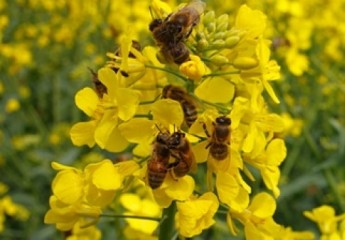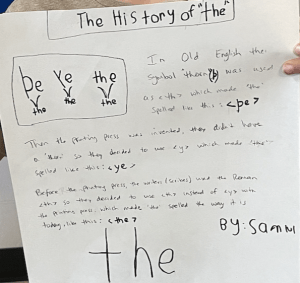What a great year to begin teaching about spelling through the lens of Structured Word Inquiry (SWI) — this year we have several new resources to use that will help spread the awareness of the sense and meaning of the orthography of the English language!
First, we have this wonderful resource that helped a student, Sam, understand the reason for the spelling of ‘the’ — we used this new resource from Fiona Hamilton and Rebecca Loveless called The High Frequency Word Project (link). In this resource, they have short activities for students to do while learning how to spell words and learn about their histories — their stories. Sam loves history and has difficulty learning the spelling of words. He was so excited to learn about the histories of many words. One day, after using this resource for about a week, he proclaimed:
“I love history, and I know I can learn how to spell and read words when I know their stories! Everyone should love this stuff!”
This resource will help Sam and his classmates associate the spelling with an interesting story — the best way for many people to learn, especially those with learning challenges. How wonderful that the students will also use opportunities to learn how to express their learning with each other and with a broader audience as well!
Watch this short video (1 minute 30 sec) of Sam explaining the etymology of the word ‘the’ that he learned from The hfw Project and Etymonline.
This project was very impromptu — it began when the small group came in to my Resource Room after lunch one afternoon. Sam said:
“I really like learning the history of ‘the’. I told my teacher and I even told my friend outside at recess just now.”
I was very impressed with his exuberant sharing of this little tidbit so I asked if he wanted to make a poster of his knowledge. He did, but, with our short time in our group, we decided that he would dictate the lengthier information to me and I would write down what he said. There were one or two spots where I asked a clarifying question to redirect his focus but the majority of the poster is all his recall and summarizing. He wrote the title, symbols and the individual words as they went through history.
After we finished, I wondered if he was up for making a quick video that perhaps we could publish for others to learn from. He was all for it! But, he quickly realized that filming an explanation was harder than just telling someone — he persevered out of a strong will to get the information right and to help others the way he feels this helps him. We made a few short videos which I spliced together using the CapCut editing app at home. I’m not as proficient with this new-to-me app and have taken a bit of time to learn the ins and outs (this was filmed about a month ago). I showed different drafts of the video to Sam and his group, they offered suggestions to make edits. Sam’s parents are supportive of his love of learning and give their permission to share his video in school and on this blog so others can benefit from his enthusiasm and knowledge. Sam has the heart of a teacher, wanting to make this short informational video and poster so others can learn about the spelling that he finds fascinating.
Another wonderful new resource is a book that was published in 2021, Beneath the Surface of Words: What English Spelling Reveals & Why It Matters by Sue Scibetta Hegland. It is like a text-book for English orthography. I would love to teach a university class for future and current educators using this book. If you are a professor, please pick up a copy to consider adding to your class. If the concepts and perspective of looking at spelling for sense and meaning is new to you, I urge you to take your time, slowly begin to see words as more than just sound as the primary means to reading and spelling. Don’t try to take big gulps, you may feel like you are drowning. By taking on a little at a time, you’ll begin to see the “exceptions” as something you can actually explain by looking at the history of the word and seeing the connections to other words within its family. The sense and meaning making are as addictive for the adult as it is for the kids.
Along with Sue’s amazing new book is another new book that I consider a wonderful companion book to it, titled, Backpocket Words: Sharing the Essence of English Spelling by Gail Portnuff Venable. It is filled with intriguing words and stories about the spellings and relationships that words share as well as words that appear to share something but do not, and for good reason! This book will explain many nuances of spellings and leave you interested to continue journeying down the path of understanding the spelling of our language.
Anyone can see and feel Sam’s enthusiasm for learning about the history of this word. Each subsequent word we’ve studied has brought more and more understanding. He and a partner are going to begin this next week coming up with a poster about the articles: a, an & the to hang in the hallway, expressing their understanding that these articles determine nouns in a sentence — they were shocked to learn that words have jobs! I can’t wait to see what their efforts spark in the other students as well.
*This blog contains affiliate links, feel free to click on those or do a search for the books on your own.






Wow Lisa, what a truly wonderful post for sharing the joy of learning you and your students clearly engage with together al the time. The video of your student presenting on “the” is priceless! I will be pointing many people to this post and your blog so more of us get to learn along with you. Thanks!
Thank you Pete!
Dear Sam (and Lisa),
I very much appreciated your excellent explanation of the word . I will look at “Ye” as in “Ye Olde…” so differently now that you have explained how the spelling evolved. Thank you so much for sharing. I am in NY so I can’t come see your Word Wall, though I would like to, but will look forward to more of your videos in the future!
I know, right?! Knowing the history really makes much more sense of “Ye Olde Shoppe” now. I’ll share your lovely comments with Sam tomorrow.
Dear Ms. Voelkel,
I wish you could come here and see the Word Wall. I’m glad I helped you understand how the word ‘ye’ evolved over time.
Sincerely,
Sam (& Lisa)